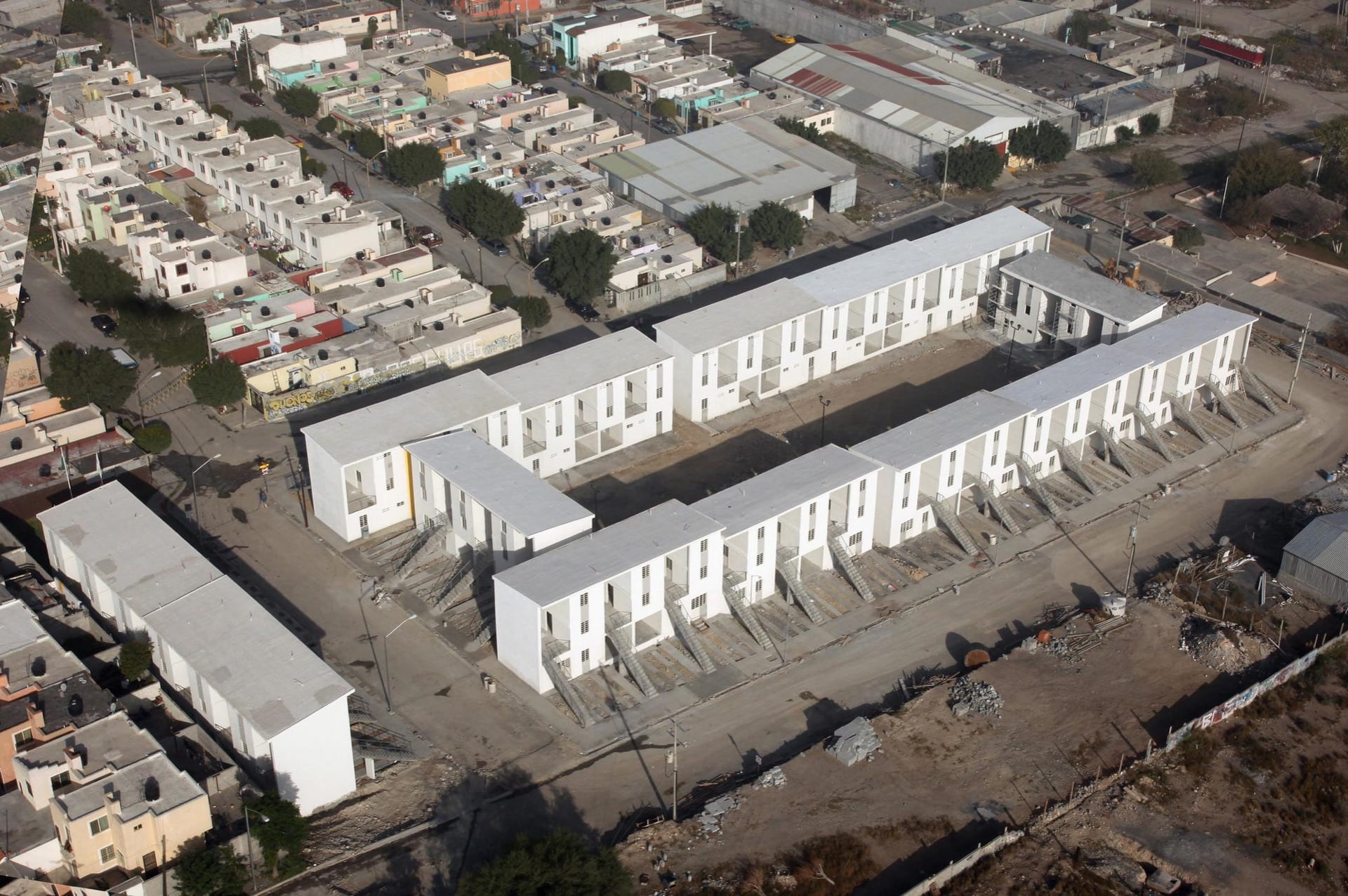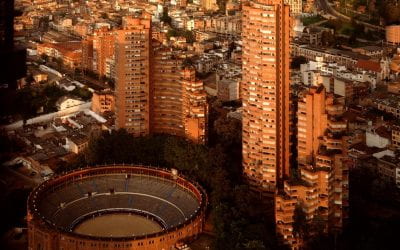Working in the Antipodes
Social Housing in the Third World and High Profile Projects in the First World
I was asked by ReVista to write an article on my own work, specifically about the fact that I do simultaneous work on social housing and high-profile architectural projects, something that is, to say the least, unusual. As I was trying to explain this, everything I started to write came dangerously close to a theory or method. And that’s not the way I work. On the other hand, to look at one’s own way of working is something that should be avoided. So, when I remembered a letter that Hashim Sarkis, friend and Aga Khan Professor at the Harvard Graduate School of Design, had written to me back in 2002, I thought that could be a way to deal with the request.
Sarkis wrote to me back in 2002.
Aravena my friend:
Instead of finishing an overdue paper, my thoughts are going adrift in a manner that is becoming more frequent the more I look around me in search of coordinates. I write to you instead of thinking alone because I think you may share my impatience and help me think through some of the issues productively, but also because I believe there is a need to start a discussion among architects in search of a new synthesis.
I am growing impatient with the way architectural questions are being asked today. The current explorations are all well intentioned and they open up formal possibilities that architects can think about, but judging by the way in which discussions are going in search of a super determining force, into materials, into geometry, into programme, into form, into tectonic, there is a serious lack of synthesis. Not that we need a framework into which we can put these explorations(…). We need strategies to think across these individual explorations which are very serious when they remain confined to their topic, but become thin and silly when they try to describe the whole of architectural production and relevance. The best effect that these limited revisions have is shock. A and B shock us, X and Y shock us [I have substituted the names that were originally in the letter by A, B, X and Y, not to protect innocents because they are not, but to protect Sarkis from raging architectural stars], but I do not want to think of architecture as a shock-driven discipline or of myself as someone who can only shock people in order to attract their attention. There is more to what we can do following this avalanche of explorations of the past few years.
What cuts across? What questions synthesize? I have been thinking about these questions for a while, particularly around the work I am doing in Lebanon but also around the Practices in Democracy sequence. At the end of every semester I use to sum up some converging themes among the revisionist practices that we would examine in class. The convergence becomes more urgent the farther away from Paris and New York the examples are. I do not know if these make up a complete set of themes but it could be a place to start a discussion:
1) How can we think of architectural questions in non-architectural terms? Meaning, from inside the domain of practice, how can we keep revising the way in which we describe things to ourselves so that we communicate the relevance of our questions to non architects but also to constantly question the validity of what seems to be fixed in our minds (.…)
3) How can we find ways to reduce the impact of externally determined procedures on architecture and increase the capacity of every project generating a specific set of procedures that are pertinent to the questions being asked from within. Why should we always follow a set of rules written for all buildings that turn all buildings the same when we can think of every building as a source of rules that could be valid (in terms of access, materials, architectural character, etc.) (….)
5) How can we also think of architecture as a discipline and practice that is mobilized to help the disenfranchised in every project. Can building be used for redistributive purposes? This is a question that you seem to raise in your studios here at the GSD as well but which is a very difficult to ask because projects are usually built for those who have the money and when they are built for those without money it is their common interests not their individual ones that are highlighted.
I am sure that there are other important and more important questions that we can ask, but it is really along this path that I believe that we should be able to think of architecture as being at once instrumental and independent, and that we can start moving away from the singular determinisms of architecture to a more synthetic way of thinking.
Best,
Hashim
I have been trying to translate this letter for 8 years now. Not that I don’t understand it; I’ve been trying to transform it into facts, into built work, into a way to engage issues that matter.
The way I see it, is that architects tend to be interested in things and themes that only interest other architects. There was a path that forked in the 60s or maybe 70s.
On one path, there was a group that since the beginning of Modern Movement was asking for artistic freedom, asking society to let them be geniuses and they were given that “privilege”; the price they paid was irrelevance. This group ended up as “ists”: postmodernists, deconstructivists, minimalists, etc. and finally as stars. To dissimulate their irrelevance, they developed the strategy of shock.
On the other path, there were those wanting to deal with hard, difficult questions, but to get engaged with them, they stopped being architects and abandoned the discipline’s core: the project. This other group ended up as experts, bureaucrats, consultants for international organizations etc. and finally as non-architects. To dissimulate their impotence, they developed the strategy of diagnosis. (An expert is somebody that in a given field of knowledge can tell what not to do).
So the question, after 40 years, is:
Is it possible to engage in hard, difficult, general interest and transversal questions and contribute to them without quitting architecture, offering specific knowledge and tools to resolve non-specific problems?
I have seen recently a third group trying to make a pseudo-synthesis, making “as if” they are dealing with important issues. But this group is just pretending to do so. Instead of giving the simplest possible answers to complex questions, they are giving complicated responses to simplified problems.
This has nothing to do with moral issues, or dealing with themes that have a higher ethical standard, like poverty, or underdevelopment, or equity. It has to do with being able to answer with what is the case, abandoning the safety of irrelevance and penetrating the risk of relevance. This is what I ruminate in silence while at work.
Spring | Summer 2010, Volume IX, Number 2
Alejandro Aravena is principal of Alejandro Aravena Architects and CEO of Elemental, a for-profit company with social interest partnering by Copec (Chilean Oil Company) and UC (Universidad Catolica de Chile). He holds the Elemental Copec Chair at UC. He was Visiting Professor at Harvard GSD from 2000-2005, won the Silver Lion at the 2008 Venice Biennale and is member of the Pritzker Prize Jury. This year, he became an International Fellow of the RIBA, the Royal Institute of British Architects.
Related Articles
Architecture: Editor’s Letter
For years, readers have been commenting on the printed edition of ReVista: “How beautiful!” Now here’s a website to match, thanks to the efforts of the design firm 2communiqué and Kit Barron of DRCLAS. It’s not only a question of reflecting the aesthetics of the printed…
Three Tall Buildings
I used to hate the three tall towers that thrust against the verdant mountains. I used to think that the red brick towers dug into the landscape, belonging to some other city and some other space, created a scar of modernity…
A Tale of Three Buildings
Greek columns, in Thomas Jefferson’s designs for the University of Virginia, might evoke democracy. In Albert Speer’s designs for Berlin during the Third Reich, similar columns serve to…





